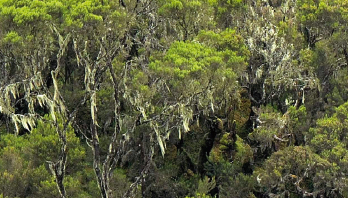All About Rainforests
A rainforest is a forested area receiving at least 173 cm of rain every year. They usually have a warm or tropical climate and are home to a wide range of animal and plant species.
Temperate rainforests are located on the coast, especially in North and South America, Australia and New Zealand. Tropical rainforests are located generally along the equator, in Central and South America, Africa and Asia.
Rainforests once covered about 14% of the Earth’s land; today it’s about 6%. Almost 140 species of insect, animal and plant vanish every day, because of forests being destroyed. Still, over half of the 10 million species of plants, animals and insects live in tropical rainforests. About 3000 varieties of fruit are found in the forests, but only 200 are edible.
There are more species of fish in the Amazon River than in the entire Atlantic Ocean. A single tree in a rainforest can contain over 40 different species of ants.
About 70% of the plants that are effective at fighting cancer are found in rainforests. About 25% of the medicines we use regularly come from ingredients found there.
The Amazon Rainforest is the largest rainforest in the world, covering over a billion acres. If the forested area were its own country, it would be the 9th largest country in the world.
The Amazon forest is home to more plant and animal species than anywhere else. In just two square acres, there are about 1500 plants and 700 types of tree.
Both the changes in the climate and deforestation threaten the rainforests of the world. They cut down trees for timber, to make room for farming and mining and to create pastures for grazing cattle.
The largest rainforests are in Brazil (South America), Zaire (Africa) and Indonesia (Indian Ocean). Smaller tropical rainforests are located in Central America, Madagascar, Australia, India, South East Asia, Hawaii and the Carribean Island.

